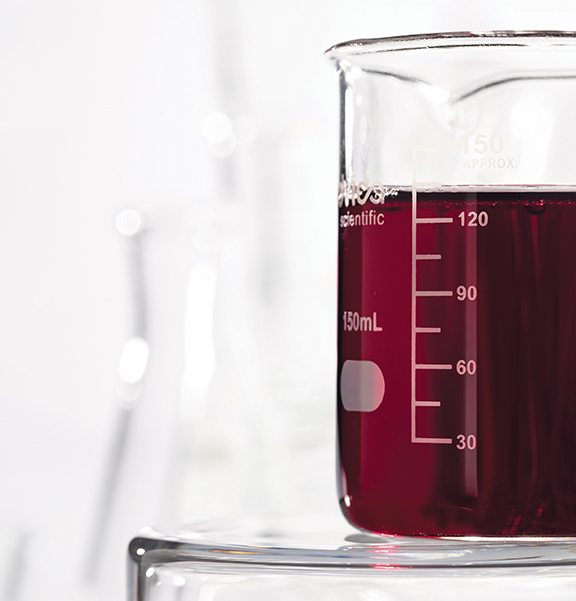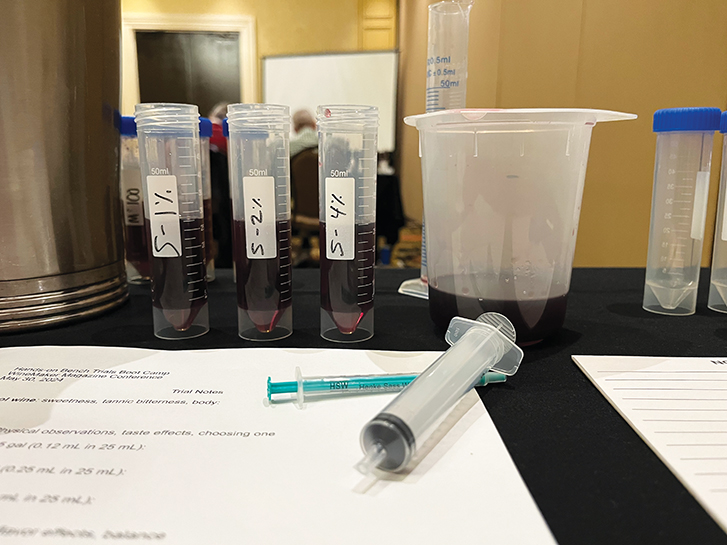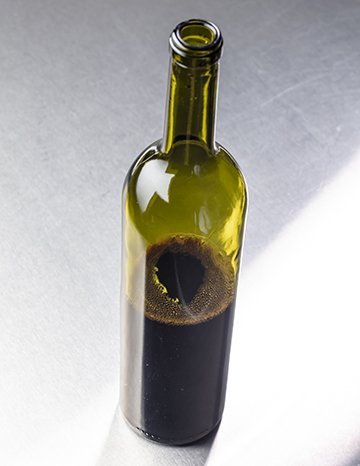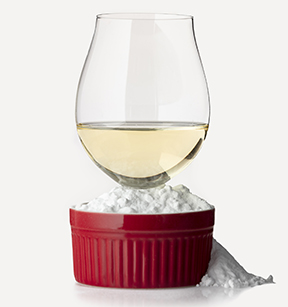Understanding YAN
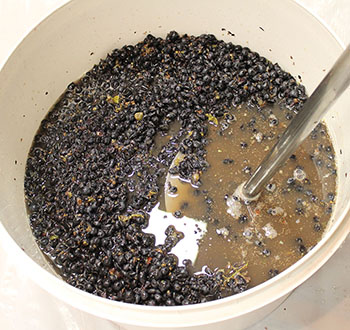
Do you need to worry about yeast assimilable nitrogen? The short answer is “yes,” you do need to worry about yeast assimilable nitrogen, or YAN, in your juice or must for a trouble-free fermentation. With quality wine kits, YAN should not be a concern because the manufacturer would have made up for any depletions in YAN, if necessary.
Our challenge as home winemakers is that we are not yet equipped with affordable analytical tools to measure and monitor YAN levels and consumption in our own cellars. But YAN management is as critical, if not more, as sulfite management, and only recently has it appeared on the winemaking radar. Compared to the science of sulfites, there is still much to learn and understand about YAN.
YAN refers to available nitrogen that yeast can assimilate to support critical metabolic functions during cell growth and alcoholic fermentation. Yeast also synthesizes other nitrogen-containing compounds including polypeptides, i.e., proteins, amines, polyamides, nucleic acids (DNA and RNA) and vitamins, as well as new amino acids. Yeast can assimilate relatively short peptide chains but have more difficulty assimilating larger polypeptides and proteins.
Nitrogen availability and assimilability should extend to bacteria, that is, lactic acid bacteria (LAB) used in malolactic fermentation (MLF). LAB also need nitrogen to support their metabolism, though their needs are a little different. Here we focus on yeast and YAN.
Here, “nitrogen” always refers to its atomic form, i.e., N, and not its diatomic molecular form, i.e., N2, as found in air.
Understanding YAN
There are many naturally occurring sources of nitrogen in grape juice. However, yeast preferentially assimilates ammonium (NH4+) and free or alpha-amino acids as sources of inorganic (mineral) and organic nitrogen, respectively. Note: The prefix alpha- refers to a specific molecular structure. The alpha amino acids are the ones commonly found in peptides and proteins. This is not important in our discussion and we therefore refer to these simply as amino acids.
Then, YAN is defined as the amount of inorganic and organic nitrogen that is available and which can be assimilated and used by yeast for fermentation. YAN is expressed as a concentration of nitrogen in mg/L, sometimes written as mg N/L; for example, 200 mg N/L means that there is 200 mg of nitrogen in a liter of juice, or roughly 800 mg in a gallon.
Ammonium cations (NH4+) in grapes are derived from nitrates in the soil and then go through various biological reactions and cycles to form amino acids, peptides and proteins.
Free or alpha-amino nitrogen, referred to as FAN, is derived from amino acids, the most significant in juice being arginine, glutamic acid, threonine and proline. Saccharomyces cerevisiae yeast can only assimilate proline under aerobic conditions and, therefore, proline has little relevance in alcoholic (anaerobic) fermentation.
Amino acids are biological molecules responsible for performing many critical metabolic functions. When amino acids combine, they form peptides and polypeptides used as building blocks in a vast array of proteins. Reds will generally contain higher amounts of amino acids than whites as a result of maceration, which increases the transfer of compounds from the solid to the liquid phase. As for grape-derived proteins, these are resistant to the action of yeast proteases (enzymes that break down proteins) and are therefore not assimilated during fermentation.
YAN in winemaking
S. cerevisiae yeast strains consume nitrogen at different rates, which can be affected by environmental factors. But S. cerevisiae yeast preferentially assimilates nitrogen from ammonium, then from amino acids, and therefore, ammonium may become depleted during yeast fermentation.
Yeast can theoretically ferment with a good supply of ammonium as the only source of nitrogen. However, amino acids give rise to a host of higher alcohols, some of which are precursors to odiferous ester compounds, and so, it’s important to have plenty of amino acids available.
The minimum amount of YAN needed in juice for a good fermentation is dictated by viticultural practices, condition of the grapes (e.g. amount of rot, fruit damage), and, most importantly, the yeast strain and amount of sugar. Temperature, pH and pre-fermentation processing (whites vs. reds) have a secondary impact.
YAN deficiency can result from poor availability of amino acids and vitamins or from the inability to assimilate amino acids due to environmental factors like temperature and oxygen availability, or because of the yeast strain’s characteristics.
Low YAN can cause a stuck fermentation; higher levels of acetaldehydes with some yeast strains; excessive stinky sulfur-containing compounds, such as the rotten-egg-smelling hydrogen sulfide (H2S); and increased higher alcohol and reduced ester production with commensurate off-flavors and aromas. Sulfide production results when yeasts start consuming sulfur-containing amino acids, such as cysteine and methionine, while higher alcohols can mask the fruity character of fatty acid ethyl and acetate esters.
However, excessive YAN can lead to an overly rapid fermentation that can affect dynamics, and aromas and flavors; the production of ethyl carbamate and biogenic amines; excessive amounts of acetic acid and ethyl acetate that would increase volatile acidity (VA); high levels of volatile sulfur compounds (e.g., H2S); and support the growth of undesirable microbes that could cause spoilage.
Ethyl carbamate, also known as urethane, does not harm wine but it is believed to be a human carcinogen, although there are no known health concerns at levels found in wine. But biogenic amines can cause unpleasant off-odors and flavors, and some of these compounds are known to have physiological effects, such as headaches and migraines.
It is generally accepted that a minimum YAN of 140 mg/L for juice at 21 °Brix (specific gravity 1.087) and 250 mg/L at 23 °Brix (SG 1.096) are required. Some authors recommend never exceeding 200 mg/L, including juice and musts from grapes affected by Botrytis cinerea rot, and yet others recommend supplementing low-YAN juices up to a final concentration of 250–300 mg/L YAN so as to produce a cleaner, fruitier style of wine. Grape juice and must processed from ripe, healthy grapes already contain 200–500 mg/L of total nitrogen, so that would be sufficient. But Mother Nature seldom delivers perfect fruit. YAN levels are very often too low, possibly lower than 100 mg/L, therefore necessitating juice to be supplemented. And once fermentation has reached the exponential growth phase, nutrients become quickly depleted, and once again need to be replenished.
This is all great, but how do we measure YAN and how/when to make calculated additions? This is where it gets tricky for home winemakers.
Measuring YAN
YAN is measured in a juice sample taken at crushing/pressing. It can be measured analytically by what is called Formol titration. Formol is the name for an aqueous formaldehyde solution. Formaldehyde is a highly volatile and toxic substance; it is also known as a carcinogen.
Alternatively, ammonium nitrogen and FAN can be measured separately and the results added to get YAN. Based on the definitions above, mathematically, YAN is the sum of ammonium nitrogen and FAN. Ammonium nitrogen can be measured by enzymatic methods, and FAN can be measured by what is called the NOPA method, in reference to nitrogen by -phthaldialdehyde assay, but this requires the use of a spectrophotometer — read, expensive.
Unfortunately for us home winemakers, Formol titration and NOPA methods either require expensive instrumentation or advanced laboratory skills beyond the reach of most amateurs, not to mention the availability and safe handling of dangerous chemicals. So what are the alternatives?
YAN Addition Protocol
When YAN cannot be measured at the crusher or press, it is usually (safely) assumed that levels are low and that the juice must be supplemented, being careful never to overdose. The range is fairly wide and gives plenty of “wiggle room.” Then, based on research and extensive testing of nutrient depletion during fermentation, yeast needs another dose of nutrients to sustain a strong fermentation when it reaches one-third sugar depletion.
The recommended protocol, then, is to add nitrogen-containing nutrients to yeast during the rehydration procedure to reach some nominal level, and then inoculating the juice. Once fermentation begins, monitor the Brix level daily and add nutrients at one-third sugar depletion. For example, if your starting Brix is 24.0 (SG 1.101), you would add the nutrients when the Brix has dropped to approximately 16 (SG 1.065).
For the rehydration procedure, choose a commercial yeast nutrient formulation, such as Lallemand’s Go-Ferm, which contain micronutrients necessary for yeast to carry out a strong fermentation. Be sure to read the manufacturer’s instructions and add at the recommended dosage rate as these products typically need to be hydrated before adding the yeast culture. The manufacturer’s technical data should also state the amount of YAN their formulation adds.
At one-third sugar depletion, you can add a generic diammonium phosphate (DAP) supplement or other balanced fermentation supplements containing an adequate supply of amino acids, peptides, vitamins, unsaturated fatty acids, sterols, minerals, and inactive yeast, such as Lallemand’s Fermaid K. Consult the manufacturer’s instructions and technical data.
DAP, also known as ammonium hydrogenphosphate or ammonium sulfate and having the chemical formula (NH4)2HPO4, has a molar mass of 132 g and delivers approximately 28 g (21%) of nitrogen, and therefore, for example, to raise YAN from 100 to 150 mg/L would require a DAP addition of roughly 5×50 mg/L or 250 mg/L, or about 1 g per gallon.
Warning: Do not add DAP or other nutrients containing ammonia salts to yeast during the rehydration procedure. Ammonia salts are toxic to yeast at high levels.
Dosage rates for these products are typically stated in g/hL, i.e., grams per hectoliter, or grams per 100 liters. Simply divide that number by 5 to determine the amount to be added to a 5-gallon (19-L) batch.
When fermentation seems sluggish, evaluate the situation before adding more nutrients, which could otherwise have negative effects. If YAN levels were adequately adjusted, other factors, such as too low of a temperature or high sulfur dioxide (SO2) levels, can be the cause.
References
1) Moreno, J. and R. Peinado. (2012). Enological Chemistry. Academic Press, London (UK).
2) Ribéreau-Gayon, P., D. Dubourdieu, B. Donèche and A. Lonvaud. (2012). Traité d’œnologie, Tome 1 – Microbiologie du vin. Vinifications. 6e édition. Dunod, Paris.
3) Scott Laboratories. GO-FERM and FERMAID K product documentation.
4) Ugliano, M., P.A. Henschke, M.J. Herderich and I.S. Pretorius. (2007). Nitrogen management is critical for wine flavour and style. Wine Industry Journal. 22:24-30.
5) Zoecklein, B.W. 2009. Yeast Assimilable Nitrogen (YAN) Measurements. Enology Notes #149.
6) Zoecklein, B.W. 2014. Nitrogen: Free Alpha-Amino Acid Nitrogen (FAN). Enology Notes #169.


